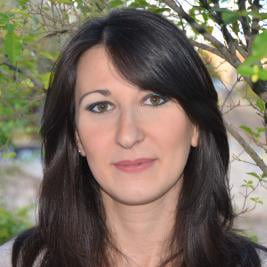Materials Characterization and Surface Analysis for Cultural Heritage
A special issue of Coatings (ISSN 2079-6412). This special issue belongs to the section "Surface Characterization, Deposition and Modification".
Deadline for manuscript submissions: closed (10 March 2024) | Viewed by 3061
Special Issue Editors
Interests: non-invasive techniques for the analyses of cultural heritage; infrared spectroscopy with conventional sources and synchrotron radiation; multispectral imaging; X-ray fluorescence spectroscopy; infrared reflectography; multivariate analyses
Special Issues, Collections and Topics in MDPI journals
Interests: non-invasive techniques for the analyses of cultural heritage; infrared spectroscopy with conventional sources and synchrotron radiation; laser-induced fluorescence spectroscopy; multispectral imaging; X-ray fluorescence spectroscopy; Raman spectroscopy
Special Issue Information
Dear Colleagues,
Knowledge about the materials employed for the realization of artworks or archaeological and historical artifacts helps us to understand the creative process of artists, the technological evolution of cultures and guides the restoration approaches. The application of analytical procedures focused on the analysis of cultural heritage allows us to achieve accurate information about the chemical composition and the degradation phenomena that involve cultural heritage.
This Special Issue is focused on the study of the materials that constitute artworks, archaeological reminds, historical works and degradation processes or restoration treatments.
Moreover, the application of advanced analytical methods for surface analyses and the application of chemometrics approach are encouraged.
This scope of this Special Issue will serve as a forum for papers in the following concepts:
- Multi-analytical approach for the study of cultural heritage;
- Surface analyses for the monitoring of cleaning processes or restoration treatments;
- New analytical techniques for non-invasive analyses;
- Application of multivariate analyses (chemometrics) for the identification of materials;
- Development of new tools or instruments for the analysis of cultural heritage.
Dr. Lucilla Pronti
Dr. Martina Romani
Guest Editors
Manuscript Submission Information
Manuscripts should be submitted online at www.mdpi.com by registering and logging in to this website. Once you are registered, click here to go to the submission form. Manuscripts can be submitted until the deadline. All submissions that pass pre-check are peer-reviewed. Accepted papers will be published continuously in the journal (as soon as accepted) and will be listed together on the special issue website. Research articles, review articles as well as short communications are invited. For planned papers, a title and short abstract (about 100 words) can be sent to the Editorial Office for announcement on this website.
Submitted manuscripts should not have been published previously, nor be under consideration for publication elsewhere (except conference proceedings papers). All manuscripts are thoroughly refereed through a single-blind peer-review process. A guide for authors and other relevant information for submission of manuscripts is available on the Instructions for Authors page. Coatings is an international peer-reviewed open access monthly journal published by MDPI.
Please visit the Instructions for Authors page before submitting a manuscript. The Article Processing Charge (APC) for publication in this open access journal is 2600 CHF (Swiss Francs). Submitted papers should be well formatted and use good English. Authors may use MDPI's English editing service prior to publication or during author revisions.
Keywords
- cultural heritage
- surface analyses
- non-invasive analyses
- chemometrics analyses






